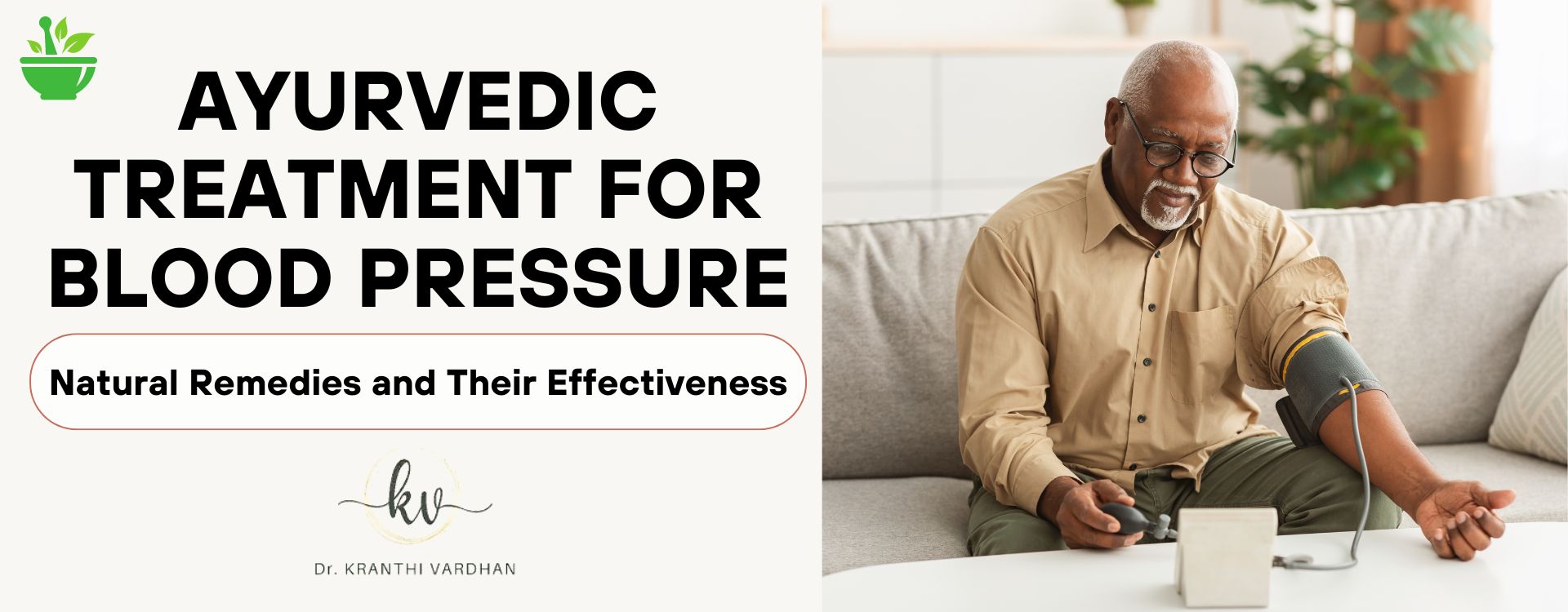If you’re one of the many people struggling with high blood pressure, you may be interested in exploring alternative treatments beyond medication. Ayurvedic treatment for Blood Pressure, a traditional Indian practice that dates back thousands of years, offers a holistic approach to managing blood pressure that focuses on balancing the body and mind.
Ayurveda views high blood pressure as a result of imbalances in the body’s doshas, or energies, particularly the Pitta dosha. By identifying and addressing these imbalances through diet, lifestyle changes, and natural remedies, Ayurvedic practitioners aim to lower blood pressure and improve overall health. Some of the most commonly recommended Ayurvedic treatments for high blood pressure include stress-reducing practices like yoga and meditation, dietary changes such as reducing salt intake and increasing potassium-rich foods, and herbal remedies like garlic and hawthorn.
Understanding High Blood Pressure
Table of Contents
ToggleThe Role of Ayurveda in Managing Hypertension
Ayurveda, the traditional Indian system of medicine, offers a holistic approach to managing hypertension. Ayurvedic treatments focus on balancing the body’s energies and promoting overall health and well-being. The following are some of the Ayurvedic treatments that can help manage hypertension:
- Dietary Changes: Ayurveda emphasizes the importance of a balanced diet that includes whole grains, fresh fruits and vegetables, lean proteins, and healthy fats. Avoiding processed foods, caffeine, and alcohol can also help lower blood pressure.
- Herbal Remedies: Ayurvedic practitioners often recommend herbs such as ashwagandha, brahmi, and arjuna to help manage hypertension. These herbs are believed to have a calming effect on the body and promote healthy blood flow.
- Yoga and Meditation: Ayurveda considers stress to be a major contributor to hypertension. Practicing yoga and meditation can help reduce stress and promote relaxation, which can help lower blood pressure.
Ayurvedic Perspective on Blood Pressure Imbalance
According to Ayurveda, hypertension is caused by an imbalance in the body’s energies, or doshas. The three doshas are vata, pitta, and kapha, and each has a specific role in the body. When these energies are out of balance, it can lead to various health problems, including hypertension.
Ayurvedic practitioners believe that hypertension is primarily caused by an imbalance in the pitta dosha, which is associated with heat and fire. Pitta imbalances can be caused by a variety of factors, including stress, poor diet, and lack of exercise.
To manage hypertension from an Ayurvedic perspective, practitioners focus on balancing the pitta dosha through dietary changes, herbal remedies, and lifestyle modifications. By promoting overall health and well-being, Ayurvedic treatments can help manage hypertension and reduce the risk of complications.
Ayurvedic Dietary Recommendations
Herbs and Spices for Blood Pressure Control
Ayurveda recommends incorporating certain herbs and spices into your diet to help manage blood pressure. These include:
- Garlic: known for its blood pressure-lowering properties, garlic can be consumed raw, cooked, or in supplement form.
- Turmeric: contains curcumin, a compound that can help reduce inflammation and lower blood pressure.
- Cinnamon: can help improve blood circulation and lower blood pressure.
- Ginger: can help improve blood flow and reduce blood pressure.
Nutritional Guidelines According to Dosha Type
In Ayurveda, doshas are the three energies believed to govern our physical and mental health. Each person has a unique dosha type, and Ayurvedic dietary recommendations vary according to dosha type. Here are some general guidelines:
- Vata dosha: should focus on warm, cooked, and nourishing foods such as soups, stews, and grains. Avoid cold and raw foods.
- Pitta dosha: should focus on cooling and calming foods such as fresh fruits and vegetables, coconut water, and herbal teas. Avoid spicy and fried foods.
- Kapha dosha: should focus on light and warming foods such as steamed vegetables, soups, and spices like ginger and black pepper. Avoid heavy and oily foods.
By incorporating these Ayurvedic dietary recommendations into your daily routine, you may be able to help manage your blood pressure naturally. However, it is always important to consult with a healthcare professional before making any significant changes to your diet or lifestyle.
Lifestyle and Home Remedies
Stress-Reduction Techniques
If you’re looking to reduce your stress levels, there are a few techniques you can try at home. First, consider practicing deep breathing exercises. This can help you relax and decrease your blood pressure. Another technique is progressive muscle relaxation, which involves tensing and relaxing different muscle groups in your body. This can help reduce muscle tension and promote relaxation.
Physical Activity and Yoga
Physical activity can be a great way to lower your blood pressure. Consider adding more movement into your daily routine, such as taking a brisk walk or going for a swim. Yoga is another great option, as it combines physical activity with stress-reduction techniques. Some yoga poses, such as the downward-facing dog or the child’s pose, can help lower blood pressure.
Remember, lifestyle changes and home remedies should be used in conjunction with medical treatment for blood pressure. Always consult with your healthcare provider before making any changes to your treatment plan.
Ayurvedic Treatments and Therapies
Panchakarma Detoxification
Panchakarma is a detoxification therapy in Ayurveda that involves five procedures to eliminate toxins from your body. The five procedures are Vamana (emesis), Virechana (purgation), Basti (medicated enema), Nasya (nasal medication), and Raktamokshana (bloodletting).
Panchakarma detoxification helps to balance the three doshas (Vata, Pitta, and Kapha) in your body and improve blood circulation. It is a safe and effective treatment for high blood pressure when done under the guidance of a qualified Ayurvedic practitioner.
Massage and External Therapies
Ayurvedic massage and external therapies are an integral part of Ayurvedic treatment for high blood pressure. The massages are done using herbal oils and are aimed at improving blood circulation, reducing stress, and promoting relaxation.
Shirodhara is an Ayurvedic therapy that involves pouring warm herbal oil over the forehead in a continuous stream. It helps to calm the mind, reduce stress, and improve blood circulation.
Other external therapies like Abhyanga (full-body massage), Pizhichil (oil bath), and Njavarakizhi (herbal rice bolus massage) are also effective in reducing high blood pressure.
In conclusion, Ayurvedic treatments and therapies like Panchakarma detoxification and massage can help to manage high blood pressure naturally. It is important to consult a qualified Ayurvedic practitioner before undergoing any treatment.
Blood Pressure Treatment at Vardhan Ayurveda Hospital
At Vardhan Ayurveda Hospital, the treatment of high blood pressure is based on the principles of Ayurveda. The aim of the treatment is to bring the blood pressure levels to a normal range and maintain it without any side effects.
The treatment begins with a thorough examination of the patient’s medical history and current health status. The doctors at Vardhan Ayurveda Hospital use a combination of Ayurvedic therapies, diet, and lifestyle modifications to lower blood pressure levels.
Ayurvedic therapies such as Shirodhara, Abhyanga, and Pizhichil are used to reduce stress and improve blood circulation. These therapies are known to have a calming effect on the mind and body, which helps to lower blood pressure levels.
The diet prescribed by the doctors at Vardhan Ayurveda Hospital is rich in fruits, vegetables, and whole grains. They also recommend reducing the intake of salt and processed foods, which are known to increase blood pressure levels.
In addition to Ayurvedic therapies and diet modifications, lifestyle modifications such as regular exercise, yoga, and meditation are also recommended to lower blood pressure levels. These lifestyle modifications help to reduce stress and improve overall health.
Overall, the treatment of high blood pressure at Vardhan Ayurveda Hospital is based on a holistic approach that focuses on improving overall health and well-being. With the right combination of Ayurvedic therapies, diet, and lifestyle modifications, it is possible to lower blood pressure levels without any side effects. Feel free to contact our team via call +91 905 905 92 92 for more information.














